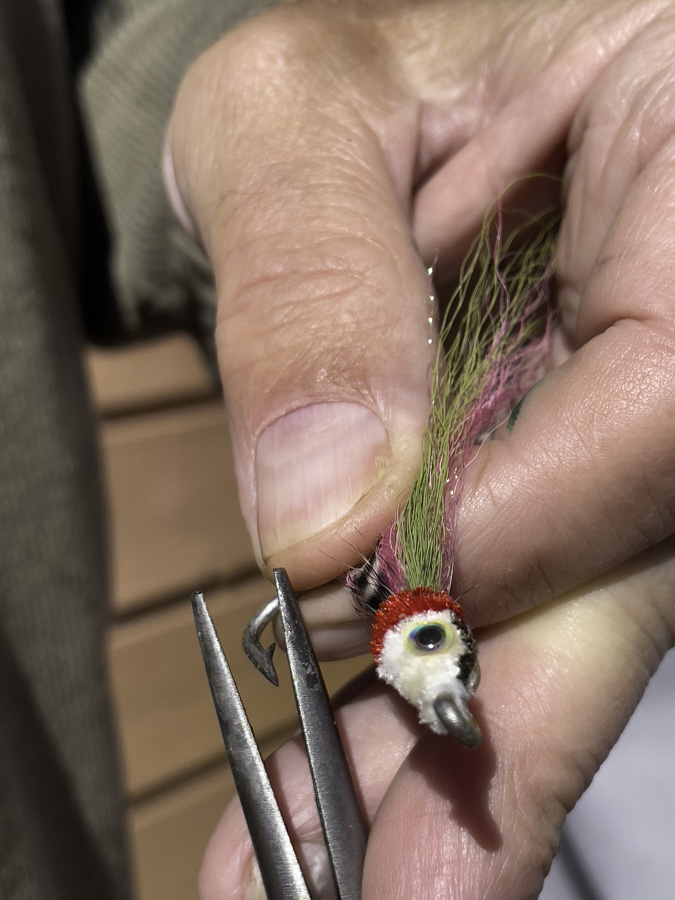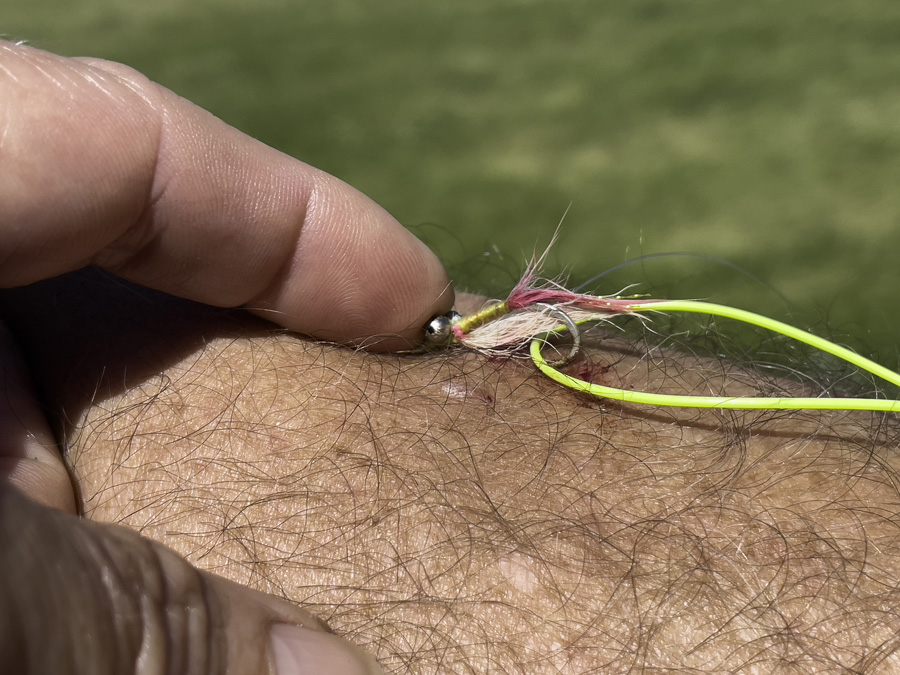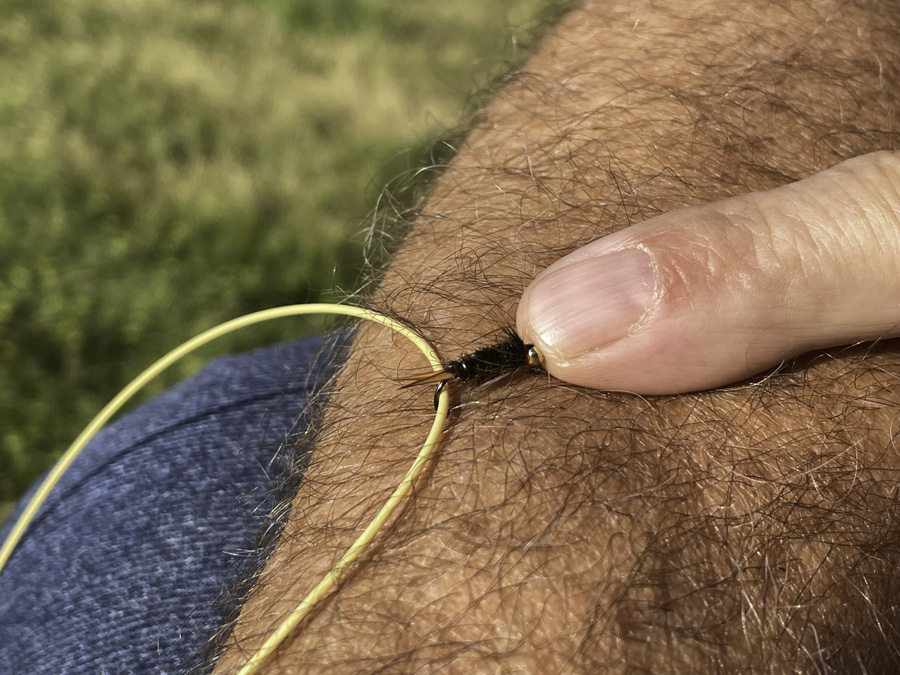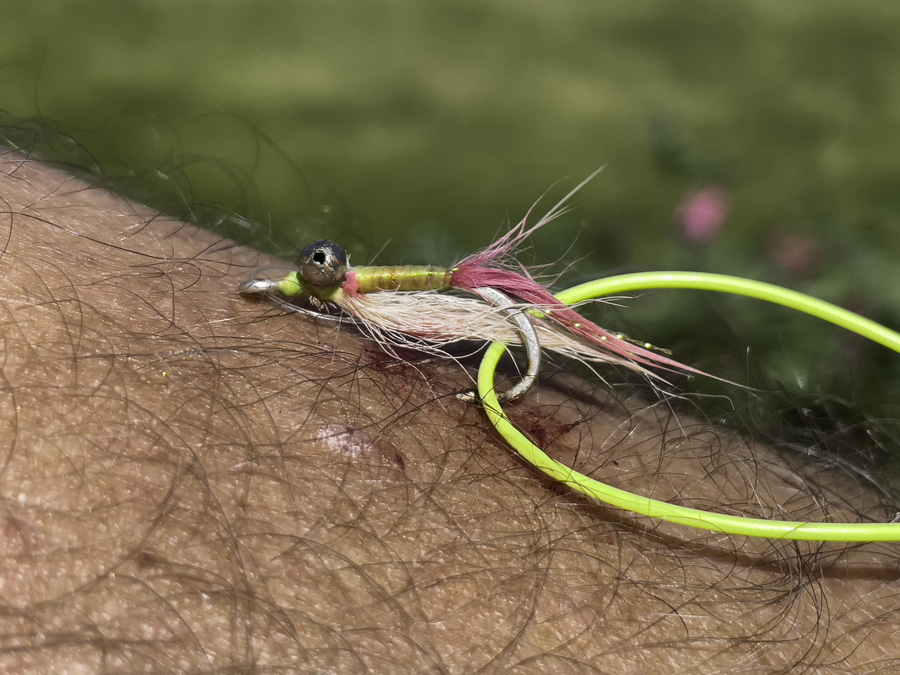E. Donnall Thomas Jr./Lori Thomas
Back in 1980, before its famous king salmon run crashed, the Kenai River was Alaska’s most heavily fished stream. At the time, I was living and working near its banks in Soldotna, the small town at the fishery’s epicenter. When the run was near its summer peak, the river grew crowded with visiting anglers, which is why I almost always fished elsewhere at that time of year.
As an internist, my primary hospital duties came in the intensive care unit, but in a small hospital with a limited medical staff, everyone had to take a turn in the emergency room. I had already learned that most visiting tourists arrived with an agenda to fulfill in Alaska, which usually included seeing a bear, watching the northern lights, and catching a salmon. Determination to accomplish the last of these goals seldom reflected competence as an angler, which meant the guide boats were full of inept clients hurling large, barbed hooks buried in globs of salmon eggs across the powerful glacial current with more enthusiasm than accuracy—and predictable results. The ER staff always saved the hooks and lures we removed from the victims and posted them on a board running around the walls. By the end of summer, our emergency room looked more like a sporting goods store than a medical facility.
We were already off to a good start one long day in late June when a large, loud woman with a thick Bronx accent arrived demanding immediate attention. Sensing trouble, I began the evaluation with my most charming bedside manner.
“What brings you to the emergency room today, ma’am?” I asked sympathetically.
“My goddamn husband hooked me!” she bellowed back, pointing angrily behind her at a terrified man cowering against the wall. I’m ashamed to admit that I already felt more sympathy for him than for the patient.
“I gather the hook is still in you,” I replied. “Where exactly is it?”
“In my boob!”
Oh boy, I thought, as our capable nursing staff reassured the woman, led her to an exam table, and began to remove her shirt and bra, an operation that required snipping some clothes and elicited a wail of protest about her ruined shirt. And there it was, a magnum-sized Spin-n-Glo bobber riding a leader as thick as an anchor line above the eye of a vicious looking hook. Cursory examination revealed both good news and bad. The good news was that it was a single hook and not a treble, which can be much more difficult to extract. The bad news was that it had a barb, which was now firmly embedded adjacent to the nipple.
“This is so embarrassing!” she wailed as I gently poked and prodded.
“I’m a doctor, ma’am. I’ve seen thousands of breasts.”
“Bet you’ve never seen one like this!” She had a point.
“Don’t worry,” I reassured her. “We’ll have this out in no time, and it won’t even hurt.”
“You’re going to put me to sleep, aren’t you?’
“That won’t be necessary.”
“Maybe not for you! Can’t you at least use a lot of Novocain?”
“That won’t be necessary either. It will hurt less without it.”
“Can’t you send me to a specialist or something?”
“Ma’am, we’re in Soldotna, Alaska. I’m as special as it gets around here. Now try to relax and I’ll draw you a little picture of what we’re going to do.” Intending to involve the guilty husband in the discussion, I looked around for him, but he had already retreated—to the waiting room or, as I suspected, the nearest bar. Then I gave the nurses a look that said, “We’re all in this together, team,” and prepared to go to work.
 Fishhooks are supposed to wind up in the water or, even better, in a fish’s lip, but fate does not always treat us so kindly. These events are usually little more than a minor distraction, especially for fly rod anglers who use small hooks and take time to crimp down barbs. However, salt water often demands large hooks, and even if we are careful about barbs, our fishing companions may not be, a point (no pun intended) I’ll illustrate later. Every angler should understand how to extract an embedded fishhook or, better yet, prevent the problem before it happens.
Fishhooks are supposed to wind up in the water or, even better, in a fish’s lip, but fate does not always treat us so kindly. These events are usually little more than a minor distraction, especially for fly rod anglers who use small hooks and take time to crimp down barbs. However, salt water often demands large hooks, and even if we are careful about barbs, our fishing companions may not be, a point (no pun intended) I’ll illustrate later. Every angler should understand how to extract an embedded fishhook or, better yet, prevent the problem before it happens.
During my tenure in Alaska, I removed hooks from almost every conceivable part of the human body, with anatomic details best left to the reader’s imagination. (Yes, even there.) The eye was one important exception. A hook embedded in an eye represents an emergency that should always be handled by an ophthalmologist. Should you encounter this situation in the field, keep the patient as comfortable as possible and seek expert consultation. Do not attempt to remove the hook.
An ounce of prevention being worth a pound of cure, let’s turn our attention to avoiding these problems in the first place, beginning with the most vulnerable part of the body. I never fish without appropriate eye protection and strongly encourage companions to do the same (to the point of being obnoxious, according to some friends). For those who don’t wear corrective lenses routinely, protection usually takes the form of polarized glasses, which improve the ability to spot fish anyway. Most of today’s high-quality sunglasses allow clear vision even in low light situations, so clouds are no excuse for not wearing them. Now that my aging eyes have trouble with light tippet, small flies, and knots, I also appreciate the small near vision correcting lens incorporated in many models, which save me the trouble of fumbling around with reading glasses when I’m trying to fish.
The next important preventive measure should be obvious: crimp down those barbs! Fly rod anglers are usually good about this anyway, out of concern for the welfare of released fish. Barbless hooks produce much less tissue damage and are far easier to extract than those with barbs, from both fish and anglers. Barbs have been around forever, largely because of the incorrect assumption that they will result in fewer lost fish. In fact, the increased diameter of the hook point produced by barbs decreases the chance of a firm hook-up.
Unfortunately, most commercial hooks come with barbs, because so many anglers (especially those fishing with conventional tackle) believe in them. Barbless hooks are more expensive to manufacture and to buy. Fortunately, the problem is easy to solve with a good pair of needle-nose pliers. I try to crimp down all my hooks before they leave the tying vise, to avoid neglecting this task and having to fumble around with it on the water.
Now to the heart of the matter: proper technique for removing a barbed hook if these preventive measures fail. For years, conventional wisdom advised pushing the point forward through the skin, clipping off the barbed section, and then withdrawing the hook the way it came in. Unfortunately, as with lots of conventional “wisdom,” this method isn’t wise at all since it is painful and causes more tissue damage than a readily available alternative.
 Although it’s simple, this technique is difficult to describe verbally, and I hope the accompanying photographs will make it easier to visualize. Think of the process in three steps:
Although it’s simple, this technique is difficult to describe verbally, and I hope the accompanying photographs will make it easier to visualize. Think of the process in three steps:
- Pass a length of stout tippet or line through the bend in the hook to create an open loop.
- Press down on the hook’s eye.
- Give the tag ends of the loop a quick snap, with the force directed parallel to the skin surface.
Done properly, this process will disengage the barb and allow the hook to pop free with little pain. Since you don’t want the loop to break when you tug on it, I like to use line of 15-pound test or stronger. Depending on the location of the hook, this can often be accomplished without help, but it’s easier if it’s done by an assistant. There is a natural tendency to tug gently on the leader, but that may be unsuccessful, prolonging the process and leading to more discomfort. If someone else is performing the maneuver, encourage them to act counterintuitively and give the leader a sharp, hard tug as if they were strip-setting the hook on a fish.
 The body part containing the hook should remain still during extraction. If the hook is imbedded in an ear or an extremity, immobilizing it with a firm grip may be useful to prevent flinching. Distracting the subject’s attention may be useful if they are nervous or agitated—and who wouldn’t be?
The body part containing the hook should remain still during extraction. If the hook is imbedded in an ear or an extremity, immobilizing it with a firm grip may be useful to prevent flinching. Distracting the subject’s attention may be useful if they are nervous or agitated—and who wouldn’t be?
Here’s how the process plays out in real life. One summer day near our Alaska home, Lori and I were offshore in our skiff with two friends. She and I were catching nice silver salmon near the surface on streamers with barbs crimped down, while our companions mooched herring with conventional tackle. When one of them brought up a particularly vigorous fish, I netted it, dropped it on the deck, and made a dumb mistake. Eager to get my fly back in the water while we were still into fish, I decided to remove the hook with my fingers while the silver was still in the net. Using our readily available hook-out would have prevented what followed.
 As soon as I touched the hook, the fish thrashed, tangling the hook in the net, and driving the point deep into my forefinger, leaving me attached to both the net and the fish, which was still very much alive and continuing to roll. (Yes, it hurt like hell.) I yelled at Lori to dispatch the fish with the priest. She did so promptly, but the fish and my finger were still in the net. Some quick but delicate knife work soon had my hand free, but the 3/0 hook and its barb remained deep in my finger.
As soon as I touched the hook, the fish thrashed, tangling the hook in the net, and driving the point deep into my forefinger, leaving me attached to both the net and the fish, which was still very much alive and continuing to roll. (Yes, it hurt like hell.) I yelled at Lori to dispatch the fish with the priest. She did so promptly, but the fish and my finger were still in the net. Some quick but delicate knife work soon had my hand free, but the 3/0 hook and its barb remained deep in my finger.
Since we were fishing with heavy line, I had no trouble locating a spool of stout tippet. As I issued instructions, I could tell that Lori was uncomfortable with the job I outlined even though she is an experienced registered nurse. Just as I feared, her first effort resulted in a loss of nerve and a gentle tug that accomplished nothing except more pain in my finger. “Strip set!” I bellowed, and when she did so on her next try, the hook flew out easily.
With nothing more to be done at that point, I took the obvious course of action, picked up my rod, and was soon fast to another nice silver.
***
What about the unhappy lady in the emergency room that day? Although I thought I might have to sedate her to get the job done, I distracted her with a long series of questions about her day on the water. (She proudly reported landing a Dolly Varden.) With her thus engaged, I slid a loop of suture around the hook and popped it out easily.
With the hook free at last, I grabbed a large Kelly clamp and showed her how to crimp the barb down.
TAIL FLY FISHING MAGAZINE WAS PICKED BY FEEDSPOT AS ONE OF THE TEN BEST FISHING WEBSITES AND BLOGS…
More articles…


